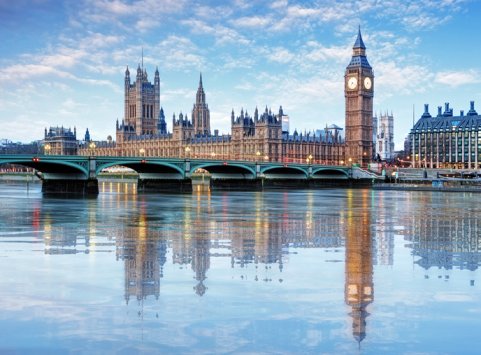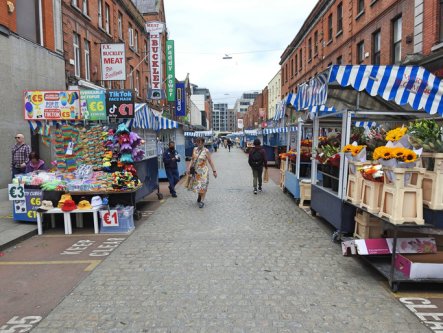Exploring Europe's Riskiest Cities: Crime Hotspots, Safety Insights & Travel Tips
Learn about the top 10 most dangerous cities in Europe, and get essential safety tips to ensure a secure and enjoyable stay or trip across the continent.
The Most Dangerous Cities in Europe to Live and Travel [2025 Update]
-
Europe is, overall, a safe destination, but some cities may have higher crime rates, especially in areas with organized crime or high tourist traffic.
-
Economic instability, high tourism, and rapid urbanization contribute to these higher crime rates in certain areas.
-
By knowing the risk areas in each city, you can take the necessary precautions to make a safe trip.
Europe is definitely a huge continent with different crime rates in different countries and cities. While most European cities are safe for residents and visitors, crime rates can vary greatly from one area to another. According to Europol, the European Union’s law enforcement agency, Europe has a lower overall crime rate than North America and Latin America. But there are still areas of concern.
Violent crime is rare in Europe but tends to happen more in areas with economic challenges or where organized crime is present. Petty theft, including pickpocketing and scams, is more common in tourist areas. Cities like Paris, Rome, and Barcelona, despite being cultural hotspots, are also areas where this can happen.
However, most European cities are still considered safe, and only a few stand out for being more crime-ridden. Tourists planning to travel are advised to check the US travel advisory for the latest updates on the law and order situation at the place you are visiting.
Factors Contributing to Crime in European Cities
Several factors contribute to the different crime rates in European cities. Economic instability, unemployment, and poverty are big drivers of crime, especially in urban areas where job opportunities are scarce.
Tourism also plays a role in crime, as popular destinations attract not only visitors but also criminals who want to target them. Plus, petty theft and scams are more common in areas with high tourist traffic.
Urbanization and population density are also possible factors. Cities with high population density have higher crime rates due to anonymity and more opportunities for criminal activity. This is especially true in big metropolises where the diversity and density of the population makes it hard for law enforcement to monitor and control crime.
The Top 10 Most Dangerous Cities in Europe
1. Marseille, France
Marseille, the Mediterranean port city, is full of history, architecture and diversity, but it also has its problems with crime, especially drug trafficking and organized crime, because it’s a gateway to Europe. The city has been a hub for criminal networks which lead to higher rates of violence in some areas. The northern districts (Quartiers Nord) are often mentioned as the most criminal, especially drug and gang related.
Despite all this, Marseille is still a touristy destination and urban renewal, and safety improvements are ongoing. Petty theft (pickpocketing) is an issue, especially in crowded areas like the Old Port (Vieux-Port) and the markets. But by being vigilant and avoiding high risk areas, you can enjoy the city’s culture, the coast and the food with minimal risk. The local authorities have also increased safety, so the city is safer than it has been for years.
2. Naples, Italy
Naples, a city steeped in culture and the birthplace of pizza, also has some big crime problems. The presence of organized crime syndicates like the Camorra, earns Naples a reputation for being one of the most dangerous cities in Europe. Plus, petty theft and pickpocketing are common, especially in tourist areas like the historic center, Piazza Garibaldi and around the Central Station.
Yes, these are problems, but Naples is still an amazing place for visitors who take precautions. Tourists can safely visit this city if they are aware of their surroundings, avoid certain neighborhoods at night and keep valuables safe. Many visitors have no issues, especially if they stick to busy areas and use local guides they trust. The city’s history, street life and proximity to Pompeii and the Amalfi Coast make it worth visiting, despite the safety concerns.
3. Birmingham, UK
Birmingham is the UK’s second city and a bustling culturally diverse hub with an industrial heritage. But like all big cities it has its challenges, crime being one of them, particularly gang violence and drug related crime. Some areas like Aston and Handsworth have higher crime rates due to gang activity which can sometimes lead to violent incidents. Some areas that are known for their nightlife like Broad Street can have higher crime rates especially at night.
But Birmingham is a great city and has lots to offer visitors, from world class shopping at the Bullring to cultural landmarks like the Birmingham Museum and Art Gallery. Visitors can visit the city safely by taking a few precautions: avoid less populated areas after dark, stick to well lit streets and be aware of your surroundings in busy nightlife areas. The city center is generally safe during the day and the local police are working to improve safety. With its cultural offerings and friendly people Birmingham is a city that with a bit of caution can be enjoyed to the full.
Birmingham also has a history of flooding, with notable events occurring in the past two decades. The city flooded when a severe storm hit the West Midlands on May 27, 2018. Check for government advisories to be aware of any possible natural hazards that may coincide with your visit.
4. Brussels, Belgium
Brussels, the capital of Belgium and de facto capital of the EU is a city of great importance. It’s a major international hub with the European Union and NATO Headquarters here. But it has its challenges with crime, including terrorism and petty crime. The areas around the city center, especially around Gare du Midi and Gare du Nord train stations are more crime prone, pickpocketing and scams on tourists. Being a major political hub it can also be a target for more serious incidents, but these are rare.
Despite all this Brussels has a lot to offer, from the beautiful Grand Place to the Atomium. You can visit the city safely by being aware, especially in crowded areas, and avoid less busy streets at night. Be cautious near big transportation hubs and keep an eye on your belongings in touristy areas. Authorities have increased security in key areas, so Brussels is a fascinating and generally safe destination. Its history, museums and food make it a must see city if you’re in Europe.
5. Paris, France
Paris, the City of Light, is one of the most famous destinations in the world with millions of visitors every year and its history, architecture and cultural treasures. But you’ll need to be extra careful in crowded areas where thieves use distraction techniques, especially for pickpocketing and scams around the Eiffel Tower, the Louvre and Notre-Dame.
Most of Paris is safe but some outer districts like Saint-Denis 18th and 19th arrondissements have higher rates of violent crime. These areas can be more dangerous, especially after dark.
Scammers are always coming up with new ways to scam people. The latest is the cup scam, where they put a cup on the ground and wait for someone to kick it over. Then they guilt trip you into giving them money for the "broken" item. Be aware, and don't walk too close to these setups. Ignore people who approach you with unsolicited offers or questions.
Saint-Denis is also rich in culture but best visited during the day with proper precautions. To stay safe in Paris, keep your belongings secure, be wary of overly friendly strangers and don’t flash your valuables in public.
6. Athens, Greece
While Athens is generally safe, you should be aware of the potential tourist traps and local crimes. Omonia Square is a hotbed of drug-related crime and violence and so are the Acropolis and Monastiraki Square. It is better to avoid it, especially at night. This is applicable to anywhere in Athens actually.
Political tensions in Greece can also affect safety in Athens. Protests and demonstrations, especially around Syntagma Square and government buildings, are common in such times. While these are usually peaceful, they can sometimes turn violent with the police.
Avoid large gatherings or protests as these can get out of hand. Stay informed with local news and advisories from the US Department of State, to avoid any risks. These can cause temporary disruptions to public transport and access to certain areas.
7. Sofia, Bulgaria
Sofia, the capital of Bulgaria, has struggled with high levels of organized crime and corruption over the years. While much of this crime doesn't directly affect tourists, it does contribute to an overall atmosphere of caution. Outskirts of the city Sofia have been reported to have higher levels of drug-related crime. These areas often see turf wars and other violent crime associated with organized crime groups.
Touristy places like Omonia Square are known for drug-related crime and should be approached with caution, especially at night. Tourists may also encounter scams, including inflated taxi fares and overcharging in bars and nightclubs. Reports have surfaced of travelers being charged exorbitant prices for drinks, with bills reaching thousands of dollars. Borisova Gradina Park experiences disturbances related to drug use and other illicit activities.
While most travelers enjoy a safe experience, staying aware of your surroundings and paying attention to valuables can help avoid becoming a target. Use trusted services for transportation, and if you feel uncomfortable in any area, it’s best to move to a more populated or familiar spot.
8. Tallinn, Estonia
Tallinn, the capital of Estonia, has a beautiful medieval old town and is fast emerging as a digital innovation hub in the region. But it has also seen a rise in crime in recent years, mainly due to economic problems. The city is also known for cybercrime and certain types of organized crime, but this rarely affects tourists.
For visitors it’s a generally safe destination, especially compared to other European cities. Tourists are safer than locals when it comes to street crime, petty theft and scams are not as common. But still be aware, especially in crowded areas like public transportation hubs and tourist hotspots. Estonian culture is generally polite, and locals are nice to tourists. However, some areas, like parts of Lasnamäe and Kopli, are not so friendly and should be avoided.
9. Stockholm, Sweden
Stockholm is often praised for its beauty, cleanliness and quality of life, but in recent years the city has seen an increase in gang related violence, especially in some of the outer suburbs. Areas like Rinkeby and Tensta have higher crime rates than the safe city center where most tourists spend their time. These areas should be approached with caution, especially at night.
Despite this, Stockholm is one of the safest capitals in Europe, especially compared to other big cities. Most of Sweden, including the central parts of Stockholm, have low crime rates and violent crime rarely affects tourists. You can visit the city’s historic sites, museums and waterfronts with confidence by avoiding known trouble spots and taking common sense precautions, like staying in well lit areas at night. Sweden’s reputation for being safe and tidy is largely true, so Stockholm is a great and relatively safe destination.
10. Riga, Latvia
If there is a place to be dead serious about, “don’t accept eatables and drinks from strangers,” it is Riga, as there have been several reports of drink spiking. It's advisable to watch your drinks and be cautious in the city’s bars and nightlife areas. However, the Riga Tourist Police are present in popular areas to assist travelers with any safety concerns, offering support in multiple languages.
The capital of Latvia has high levels of petty crime and scams, particularly targeting tourists. Pickpocketing and even bag snatching are common in crowded areas. Most thefts happen in Vecriga (Riga's Old Town), Dzelzcela Stacija (central train station), the Autoosta (central bus station) and Centraltirgus (central market). Those carrying backpacks make themselves more appealing to thieves and travelers who are not alert are easy targets.
Many travelers have reported a scam in which they are charged exorbitant prices for drinks or had their credit cards skimmed. Inquire your hotel or lodging company for suggestions on reliable bars and clubs. When paying with a card, ensure you can see the transaction being processed, and be cautious if asked to enter your PIN again.
How to Stay Safe While Traveling in Europe
As an American traveler, your safety should be your number one priority when exploring the continent. Here are some top tips to help you stay safe and have fun:
Protect Yourself Against Tourist-Targeted Crimes
Tourist areas, public transportation and busy markets are hotspots for pickpockets and scammers. Be particularly attentive to your surroundings, especially when distracted by street performers or vendors.
Before departure, research common scams in your destination country or specific cities. This will help you recognize the tricks and avoid getting caught. Be wary when approached by strangers asking for personal info or offering unsolicited help, as it could be scammers who pose as officials or friendly locals to gain your trust.
Get Travel Insurance
Europe is generally a safe place, but unexpected things can happen and having travel insurance can help minimize the impact on your trip. You must look for coverages for trip cancellations and even theft or loss of belongings in your plan.
However, if you are traveling on a Schengen visa, travel insurance is not just a recommendation, it’s a requirement. Schengen visa regulations mandate that travelers carry Schengen travel insurance that covers medical expenses and emergencies for the entire duration of their stay in the area.
Register with Your Embassy
Before you go, register with your embassy or consulate. It will help you in case of an emergency, such as losing your passport or getting into legal trouble. Your embassy can assist and guide you.
For U.S. citizens, the Smart Traveler Enrollment Program (STEP) is a free service. It allows you to register your trip with the nearest U.S. embassy or consulate. Registration will allow you to receive important safety and security updates from your embassy about your destination.
Use Reputable Transportation
When in Europe, always use reputable ride-sharing apps like Uber or Bolt. While taking a taxi, agree on the price upfront or make sure the meter is working. Public transportation like buses, trams and trains is also safe and convenient.
However, many European cities have strict rules about validating tickets before boarding. Look for validation machines on the platform or on board and stamp your ticket. Failing to validate can result in big fines if caught by the inspectors.
Be Prepared for Emergency Situations
Make sure to inform your family or friends of your travel plans so they know where you are. Also follow local news and social media for updates on strikes, demonstrations or weather warnings that might affect your itinerary.
In case of an emergency, dial 112, the European emergency number, for help in any EU country. If you’re traveling solo, especially as a woman, download safety apps to stay connected and safe. Also check your vaccinations are up to date especially if you’re visiting rural areas or countries that require specific shots. And trust your instincts… if something feels off or too good to be true, it’s better to walk away than to get into trouble.
FAQs
1. Is Europe generally safe to travel?
Europe is generally considered safe to travel, with many countries ranking high on safety indexes. Some of the top safest countries in Europe include Iceland, Denmark, and Ireland, which consistently top the lists. However, safety can vary by city and neighborhood, so it's wise to stay informed and take basic precautions.
2. What should I do if I get pickpocketed in Europe?
If you get pickpocketed, stay calm and try to remember where it happened. Dial 112, report the theft and file a police report, which is essential for travel insurance claims. If your passport or credit cards are stolen, contact your embassy and your bank immediately to prevent further issues. It’s a good idea to carry copies of important items in case of theft.
3. Which European cities should solo travelers avoid?
Solo travelers should be cautious in cities with higher crime rates like Naples, Marseille, and certain neighborhoods in Brussels and Paris. While these cities are still popular destinations, it's best to avoid less-safe areas, especially at night.
4. Which European cities are most vulnerable to natural disasters?
The Baltic Region, and Eastern and Southern Europe have high or very high levels of natural disaster vulnerability. Apart from this, a few other regions in Europe have seen natural calamities like the 2018 Mati fire in Athens and flooding from the Danube River in Budapest in 2023.

Travel Assistance Wherever, Whenever
Speak with one of our licensed representatives or our 24/7 multilingual insurance advisors to find the coverage you need for your next trip. Contact Here




